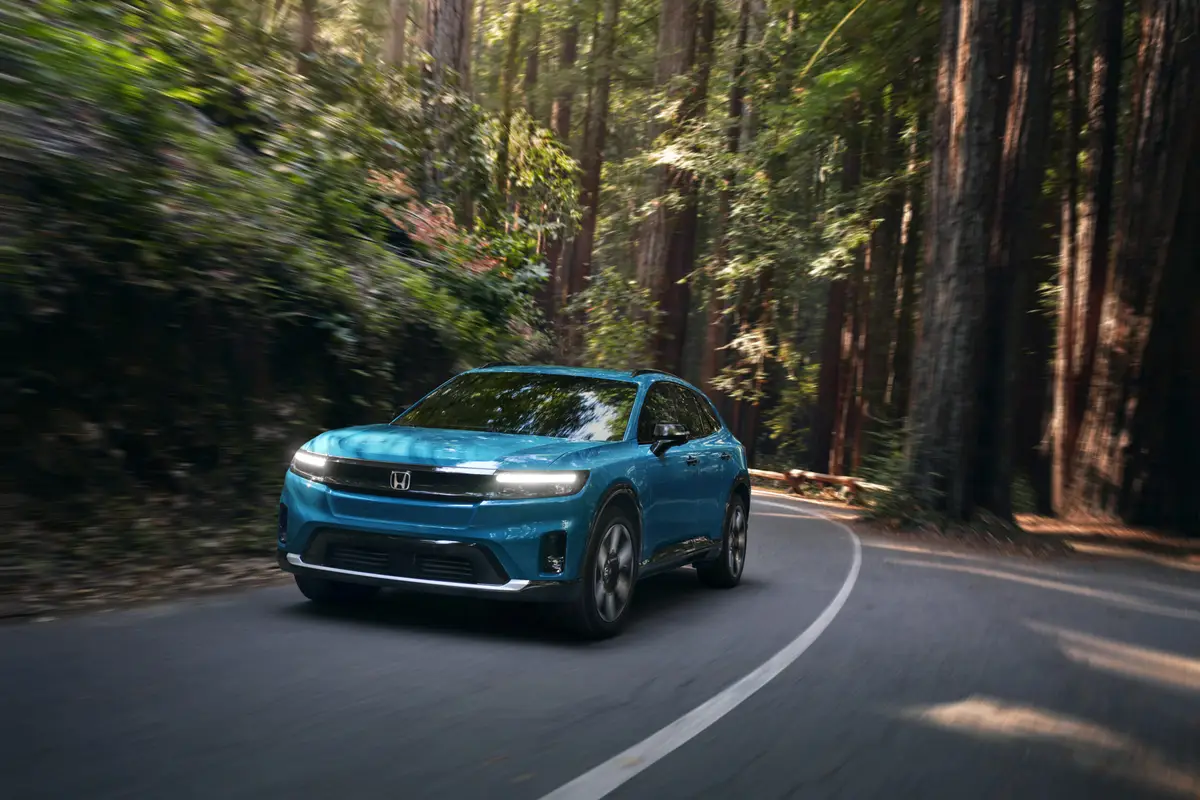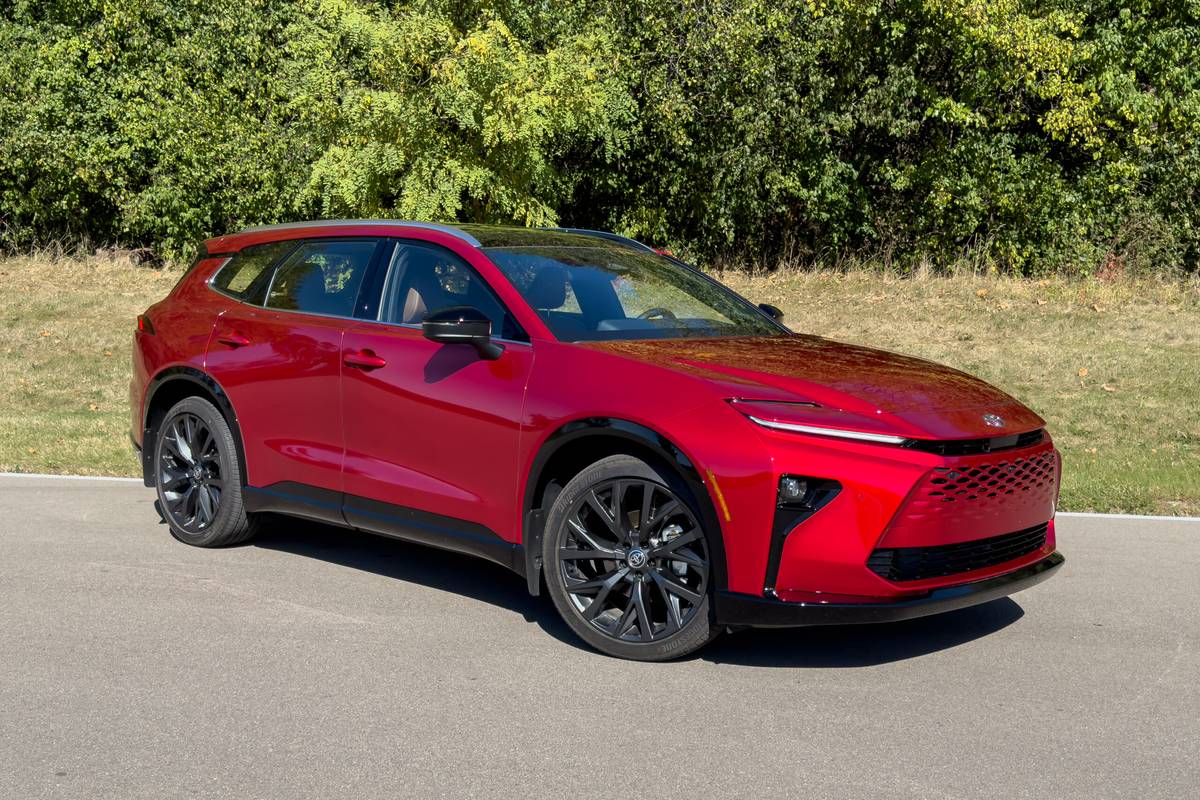chicagotribune.com's view
300C’s Hemi pushes Chrysler to RWD switch
When Chrysler said it was going to switch from full-size front-wheel-drive LH to full-size rear-wheel-drive LX sedans and put the Chrysler Concorde and 300M out to pasture, more than a few became a tad irritated.
Chrysler had devoted so much time and energy to preaching the gospel of FWD since the LHs bowed in 1993 that to switch to RWD suggested Chrysler had its fingers crossed while standing at the front-drive pulpit.
Front-drive, after all, helped get the car moving in snow while eliminating the massive drivetrain hump along the rear floor that occupants typically tripped over entering and kicked in the search of leg room.
But, Chrysler says, rear-drive promised to deliver better performance motoring and reminded that you don’t find front-drive machines on racetracks–though that might not be the case if NASCAR ran in the North in the winter rather than the South in the summer.
There were two reasons Chrysler adopted RWD for its ’05 LX models, one so it can share parts and components with Mercedes-Benz. More than 20 percent of the LX parts and components are derived from Mercedes, mostly the E-Class.
The other reason is the potent Hemi V-8.
“With RWD, you have the balance you need for that high-performance engine. RWD is the only way to go for the Hemi V-8. With FWD, you’d have so much torque steering [front end sharply turning to one side at initial acceleration], you’d go off to places you wouldn’t want to go,” said Mike Perugi, 300C brand manager.
“Enough people today didn’t grow up with RWD cars as we knew them in the’80s or remember their parents’ cars had to have snow tires in the winter or can even tell if the car has RWD or FWD,” said Perugi, insisting rear-drive won’t be a hard sell.
The 300C is powered by a 5.7-liter, Hemi V-8 engine rated at 340 horsepower and 390 foot-pounds of torque. It claims zero- to 60-m.p.h. acceleration in 6.3 seconds. It’s teamed with a 5-speed automatic with Autostick, the clutchless manual.
The Hemi is a joy with its quick response to pedal input. Nudge the pedal, and the luxury sedan takes off like a sports coupe.
The beauty of the Hemi is that it comes with a multiple displacement system (MDS). When you need the power to pass, all 8 cylinders are working, but when you don’t, 4 cylinders shut down to boost fuel economy.
The cylinders go to work or take a break in less than 40 milliseconds, so quickly you can’t tell when 4 or 8 are at work. Basically you start out in 4-cylinder mode until about 18 m.p.h., when all cylinders kick in–sooner if you press the pedal to the floor for more torque.
There’s no sudden or pronounced rush of power when 8 cylinders are functioning or sudden or pronounced loss of power when 4 cylinders are at work.
And there’s no gauge or schematic in the dash telling you which mode you are in. B ecause drivers wouldn’t know, there was no reason to tell them, said Alan Falkowski, MDS product engineering team leader for Chrysler.
So how do you know whether it’s working?
“If not, the check-engine light goes on,” he said.
While Chrysler focused on ensuring the Hemi operated smoothly, it paid as much, if not more, attention to ensuring motorists would accept RWD.
The 300C comes with technology to eliminate the problems of RWD 20 years ago, such as the tendency to fishtail when starting in snow because rear-drive pushes the weight forward while front-drive pulls it forward.
The 300C (all 300s, except the base model, for that matter) comes with all-speed traction control as standard to reduce wheel spin when moving away from the light as well as when striking a patch of snow, ice or water while driving.
Electronic stability control is also standard (except in the base model, where it is an option) to reduce unnecessary late al movement as sensors employ the anti-lock brakes (four wheel, also standard) and/or throttle control to keep the vehicle pointed in the proper direction.
And the 300C is shod with 18-inch touring radials that stick to the road in those sharp corners and turns and make the 300C a plaything.
In a few months we’ll report on how it acts in snow, but on dry pavement it has exceptional stability and keeps the driver in control.
The 300C is built on a 120-inch wheelbase that’s 7 inches longer than the 300M it replaces to give it greater road stance and make it more road friendly. Overall length is about the same as the 300M.
Inside the cabin you get a front seat track that’s 4.5 inches longer than the 300M to serve long-legged drivers. In back, the rear seat was moved back to ensure ample leg and knee room for occupants. To gain leg room for the rear seat, some trunk space was sacrificed, but if you need added cargo space, the rear seat backs fold flat.
While the LH hood slopped forward, the LX stands tall to better show off the big, bold chrome grille. The roof line looks low as if interior head room would suffer, but there’s lots of melon room and visibility side and rear is excellent.
The 300C is loaded with noteworthy features, such as standard multistage air bags with deployment speed based on speed of impact; weight sensors to prevent the bag from deploying if the passenger seat is empty or occupied by a child; auto-reverse sensing side windows that stop and retract if a hand is in the path; and driver-seat sensors that deploy the air bag at a slower speed if the seat is too close to the steering wheel, and thus, the air bag.
The test car came with a power moonroof with auto-reverse sensing, an $895 option, and a sound group that upgraded the standard AM/FM stereo and single CD player to a six-disc CD player and MP3.
Options not on the car are power adjustable gas/brake pedals with memory at $175, and a protection package at $840 with front/rear seat air curtains, park assist that beeps if too close to objects ahead or behind when parking or backing up, a cabin air filter and self-sealing radial tires.
The ’05 Chrysler 300C starts at $32,370. The base 300 starts at $22,970, Touring at $26,770 and Limited at $28,265. Only the C is V-8 powered. The others have a 2.7-liter, 190-h.p. V-6 rated at 21 m.p.g. city/28 m.p.g. highway or a 3.5-liter, 250-h.p. V-6 rated at 18/27.
Standard equipment includes rear-window defroster, rain-sensing wipers, dual-zone air conditioning, power tilt/telescoping steering wheel, outside temperature/compass display, power windows/mirrors/door locks/seats and remote keyless entry.
This fall, all-wheel-drive will be offered in all but the base model as an $1,825 option, a feature that promises even quicker, more stable off-the-line and into-and-out-of-the-corner movement as well as all-season roadworthiness.
TEST DRIVE
2005 Chrysler 300C.
Wheelbase: 120 inches
Length: 196.9 inches
Engine: 5.7-liter, 340-h.p., Hemi V-8
Transmission: 5-speed automatic with Autostick clutchless manual
Fuel economy: 17 m.p.g. city/25 m.p.g. highway
Base price: $32,370
Price as tested: $34,090. Includes $845 for Sound Group with AM/FM stereo with six-disc CD player and MP3, six speakers, subwoofer and digital amplifier; and $895 for power moonroof. Add $625 for freight.
Pluses: New rear-wheel-drive replacement for the front-wheel-drive 300M that will offer the added benefit of all-wheel-drive ($1,825 extra) this fall. Stability control and all-speed traction control are standard. Potent Hemi, yet 4 of 8 cylinders shut off when not needed to boost fuel economy. Attractive styling outside, ample room inside. Ride and handling a major step up from the FWD model.
Minuses: Getting folks to develop RWD mindset af er being pitched on FWD for years. Return of the drivetrain hump on the rear floor.
Latest news



